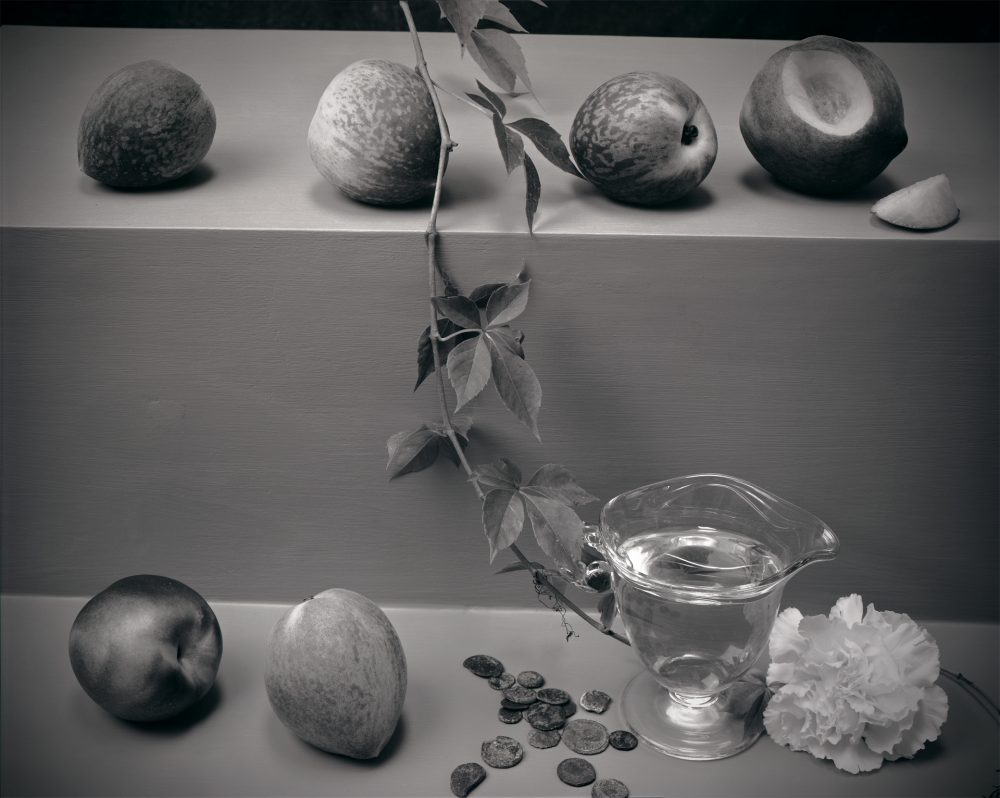Roman Fresco by Amjad Faur
- Title: Roman Fresco
- Artist: Amjad Faur
- Medium: Carbon pigment print
- Size: 36"h x 44"w
- Creation date: 2012
- Added to collection: 2016
- Donor: Purchased by Portland Community College, Rock Creek Campus
- Campus: Rock Creek
- Location: B9/1 Event Center
"Roman Fresco," a Carbon Pigment Photographic Print from 2012 by Amjad Faur recreates a Roman Fresco "Still Life With Peaches," found in a private home in Herculaneum, buried under ash during the eruption of Mt. Vesuvius in 79 CE. The imagery in the fresco is an example of the "Xenia" genre, depicting gifts presented to guests by the host to ensure the gods' good graces. Amjad Faur has meticulously recreated this ancient scene's formal beauty in velvety blacks and whites, but is it merely an exercise in art historical quotation or does it signify something deeper?
Faur, an artist of Palestinian descent, is interested in the ability of photography to explore issues of empire, colonialism, and the Islamic prohibition against image-making. The artist writes that this photo references "Escaton," or "the conclusion of the apocalypse, culminating in the end of all worldly things, anticipated by the Abrahamic faiths to unfold upon the landscape of the Middle East. This sacred geography, its history, and its peoples have a long tradition of depiction in art... (often) articulating Western European ambitions to appropriate this landscape, to consolidate control and dominion of the Levant for the Judeo-Christian world. Israel and Palestine lie at the crossroads of thousands of years of theological and political claims to this tiny and fiercely contested area of the Mediterranean. This photograph is meant to reflect and entangle some of the visual forms these claims to the Levant have taken." Given the Roman imagery references as an offering to guests, Faur seems to be questioning who are the "guests" and who are the "hosts" in this region. The imagery is timeless— only the addition of the ancient coins acts as a reminder of how many centuries separate these two images.

